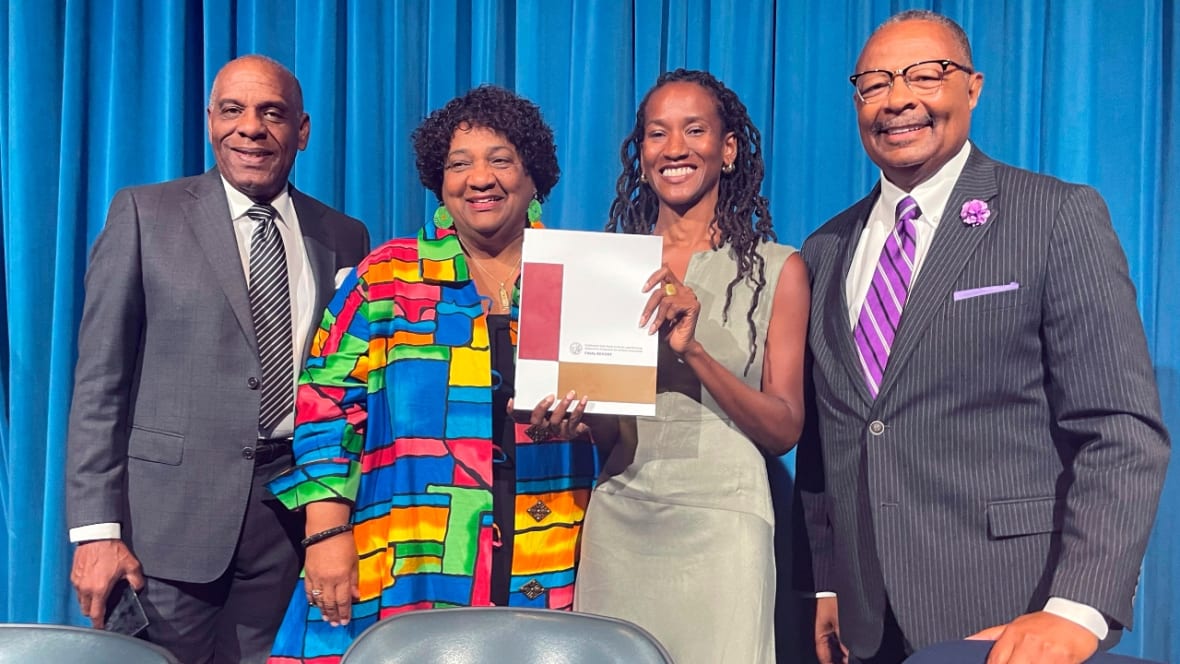California reparations plan has 1,100 pages and over 100 recommendations. Here are the highlights
California’s reparations task force completed its work Thursday, turning over a plan with more than 100 recommendations to the state’s The post California reparations plan has 1,100 pages and over 100 recommendations. Here are the highlights appeared first on TheGrio.

California’s reparations task force completed its work Thursday, turning over a plan with more than 100 recommendations to the state’s legislature.
SACRAMENTO, Calif. (AP) — It was a report two years in the making — one that details how California, a state that never officially sanctioned slavery, can confront decades of policies that have kept Black residents from living in the neighborhoods they choose, being treated fairly at doctor’s visits and building generational wealth.
California’s reparations task force completed its work Thursday and turned more than 100 recommendations over to the Legislature, the first work of its kind in the U.S. The nearly 1,100-page document recommends the state formally apologize and suggests how to calculate monetary reparations.

Here’s what the task force examined:
HOUSING DISCRIMINATION
The report recounts California policies that have kept Black families from retaining property and living in certain neighborhoods. The effects of redlining, which led to Black families being denied home loans; and eminent domain, where residents’ property was seized by the government, still linger, the report states.
The panel recommended returning property unjustly seized from Black residents. It also urged lawmakers to offer property tax relief to African American homeowners living in historically redlined neighborhoods.
OVERPOLICING AND MASS INCARCERATION
The task force condemned policies and practices that have led to Black Californians being disproportionally stopped by police, killed by law enforcement or imprisoned.
Recommendations include ending the death penalty, banning cash bail, requiring anti-bias training for police officers and funding education for more African American prospective lawyers. The panel also called on lawmakers to bar searches by law enforcement based on a person’s consent alone.
HEALTH HARMS
The committee urged lawmakers to address disparities in maternal mortality and treatment for substance abuse. Members also called for lawmakers to set aside money to research rising suicide rates among African American youth.
Another suggestion is to fund wellness centers in historically Black neighborhoods to address mental health issues and refer patients for psychiatric or medical care.
PAYMENTS
The recommendations include paying Black Californians who lived in the state while certain discriminatory policies were in effect. The task force voted to limit eligibility to people descended from free or enslaved Black people living in the United States by the end of the 19th century. The panel stopped short of endorsing a fixed dollar amount for individuals. But the members recommended calculations from economists projecting the state is responsible for more than $500 billion for overpolicing, mass incarceration and housing discrimination.
AGENCY
The task force recommended creating an agency to implement and oversee reparations programs and help people research their family history to find out if they may be eligible for compensation.
NEXT STEPS
Any policy changes must come through legislation signed by the governor. State Sen. Steven Bradford and Assemblymember Reggie Jones-Sawyer, both Los Angeles-area Democrats on the task force, have both said they plan to introduce legislation. Bradford has previously cautioned that it would be difficult to get large cash payments approved.
TheGrio is FREE on your TV via Apple TV, Amazon Fire, Roku and Android TV. Also, please download theGrio mobile apps today!
The post California reparations plan has 1,100 pages and over 100 recommendations. Here are the highlights appeared first on TheGrio.












